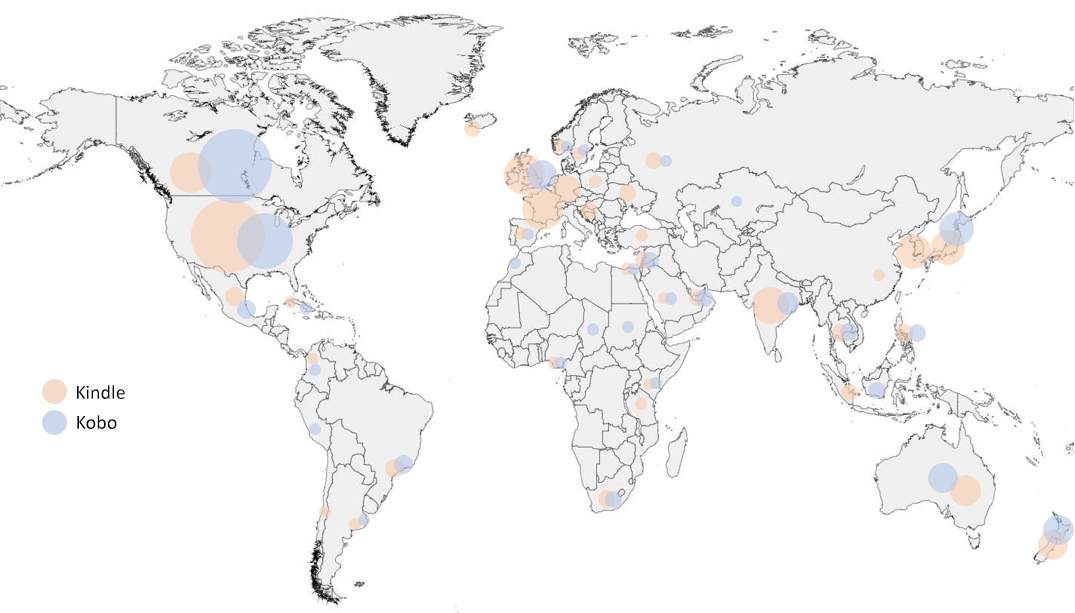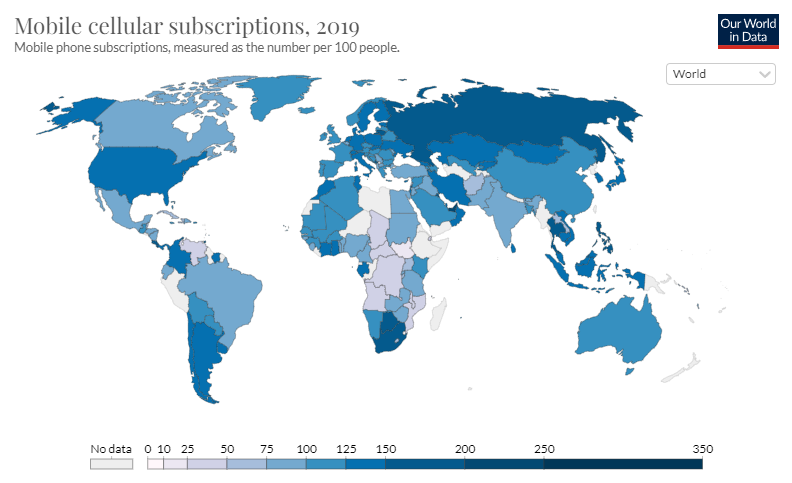Home » Blog » Online Books » Truly Global Reach
Truly Global Market Reach

Written by
Phil Winston
Gareth Morgan said "Ways of seeing become ways of not seeing" (Morgan, 1997) in his (frankly) amazing work titled Images of Organisation. By this he was referring to the mental shortcuts that we use to organise our world, which make it easier to navigate but also blind us just as much as they help us to see. Looking at the world as a set of systems, for example, can prevent us from seeing the organic flows underlying creativity, and the cultural layers that shape behaviour more than any explicit map of structure could hope to. Some refer to these ways of seeing as "Unconscious biases", which exist as the set of considerations we include in our attention spans.
The relevance of this here, is that the consideration of a "market" is often limited to the channels of distribution presented to us. And in order to better view the actual market versus this presented one, we must construct a complex map of the global landscape.
The Observed eBook Market
The total reported global market for eBooks in 2021 is estimated at US$18 Billion (Statista [eBooks - Worldwide], 2021). Of this total, approx US$6 Billion is in the USA. This is expected to increase in total revenue to US$23 Billion by 2026, with most of the growth taking place in Asia Pacific (Mordor Intelligence, 2021).
This, ideally, represents an opportunity for authors in all parts of the world.
This is largely calculated by adding the revenues generated by the larger marketplaces, such as Amazon, Kobo and others. But what percentage of the total global market this represents is difficult to calculate. we could therefore say that the ebook market is at least US$20Bn.
Market Distortion Fields
One of the main distortions in viewing the entirety of the global book market is that these marketplaces are fragmented across regions. Amazon operates primarily in the west (mostly USA), Europe is fragmented by language specific platforms, and India is fragmented among a number of players. In Europe we don't see the Indian offerings, and in India they don't see the European offerings. While Amazon is present in all three mentioned markets as a company, its share of each varies considerably.
When we layer on the "sticky" shopping behaviours of buyers, who don't often switch between marketplaces, and also the preferences towards local payment methods the roots of the distortion become apparent.
Its difficult to easily see this however, precisely because the dimensions driving the fragmentation blind us to their impact. In order to reveal the actual market available to us as authors, we have generated a map to illustrate the market presence and level of usage for both Kindle and Kobo. This can then be compared to another map showing mobile phone usage.




What this illustrates is the divide between the market that exists for ebooks accessed via ereader, and the potential ebook market if accessed through standard digital devices like mobile phones and tablets. As is clear from this perspective, much of south Asia, Russia, Africa, and South America, have large untapped markets.
This is by no means an exhaustive portrayal of the reality, but it does strongly suggest that a clear gap exists between what is observable as the ebook market, and what is the actual ebook market.
Example: South America
As an example of where this can be seen, South America has some market penetration of ereaders in Brazil and Mexico, but really no major players offering ebooks in Chile, Peru, Columbia etc. In these markets, ebooks account for only 1-5% of the total book market.
In comparison, the ebook market in Europe and the US accounts for roughly 20% of the total book market, and 10% in India. Part of the lower uptake can perhaps be explained by the price of ereaders there. A new Kindle can cost anywhere between 3,000 and 16,000INR, depending on the model, or in real terms that means a cost of between 20% and 100% of an average Indian monthly salary. For comparison, the cost in the UK would equate to between 3% and 15% of the average monthly salary. Access is limited by affordability, and that's even before a book is purchased.
Why South American customers aren't using ereaders at the level of Europe or the USA is a similar reason to that of India. Brazil and Argentina mirror the 20-100% of salary cost, with Bolivia, Peru, Columbia and others even more of a percentage of salary. Ereaders are simply unavailable from a cost perspective, with ebook distribution crippled as a result.
Removing the requirement for a dedicated device as a distribution channel would therefore likely break the market barriers for ebook adoption. The inertia generated by market share and quarterly profit targets, however, both work hard to prevent this.
Market Opportunity
So how big is the opportunity for digital books outside of centralised, and device dependent distribution channels? Sticking with the South American example we can see that there is widespread Smartphone ownership among the populations there. For comparison, Italy is 75% and the UK is 80%
- Brazil: 76%
- Columbia: 72%
- Argentina: 73%
- Peru: 64%
- Chile: 71%
We can also see that internet penetration is high. Again, for some level of context, we can compare this to Italy at 76% and the UK at 95%.
- Brazil: 74%
- Columbia: 65%
- Argentina: 74%
- Peru: 60%
- Chile: 82%
From a smartphone perspective these markets exist, with close to European levels of ownership. This clearly represents a huge untapped opportunity for authors, with the lack of ereaders as a distribution channel no longer a barrier. It is also worth pointing out again, that the leading payment methods in each of these countries are smartphone wallets, each of which has a fully integrateable website checkout plugin.
Rowing Away From Shore
To access the rest of the global market therefore requires an approach much less dependent on centralised marketplaces that require high entry costs for your potential customers. Until now, the level of sophistication required to access global markets has been hard to achieve, enabling those with the deepest pockets to dominate the landscape. This is no longer the case however, with digital books accessed through a standard web browser now possible.